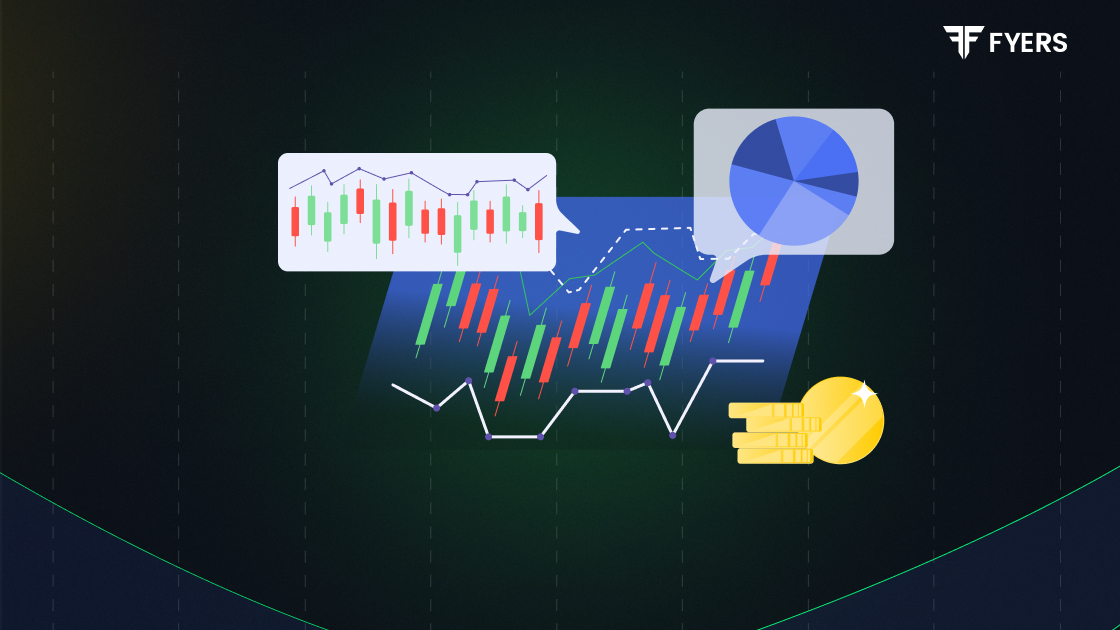

 3 Dec, 2024
3 Dec, 2024
 4 mins read
4 mins read

Stock market trading has been a cornerstone of financial systems worldwide, enabling investors to grow wealth and companies to raise capital. But what is trading, and how has it evolved over time? From the barter systems of ancient civilizations to today’s high-speed online platforms, trading has undergone transformative shifts. Let’s explore the history, types, and advantages of trading while understanding the nuances of trading strategies.
Trading involves the exchange of assets—be it goods, services, or financial instruments like stocks and bonds. In the stock market, trading specifically refers to buying and selling shares of publicly traded companies. Stock trading methods cater to different objectives, including short-term gains, long-term investments, and even hedging risks.
Modern trading relies heavily on technical analysis, fundamental analysis, and market trends. These tools help traders decide when to enter and exit positions and which trading style suits their financial goals.
The roots of trading can be traced back to ancient civilizations, where bartering was the primary medium of exchange. Over time, the invention of money introduced a standardized value system, revolutionizing trade. Fast-forward to the 17th century, the establishment of the Amsterdam Stock Exchange marked the beginning of organized stock trading.
Stock trading in India began with the Bombay Stock Exchange (BSE) in 1875, the oldest in Asia. Today, the rise of online platforms has brought unprecedented access to stock exchanges worldwide, enabling even retail investors to participate in active trading.
The digital era has also introduced sophisticated tools for technical trading, allowing day traders and swing traders to analyze short-term price movements efficiently. Meanwhile, position trading has remained a favored approach for those seeking to ride out long-term market trends.
Understanding the types of trading is essential for selecting a strategy that aligns with your goals and risk tolerance. Here are the main trading styles:
Intraday trading, or day trading, involves buying and selling securities within the same trading session. Day traders rely on real-time data and technical analysis to capitalize on small price movements. While intraday trading eliminates overnight risks, it demands quick decision-making and a strong grasp of market trends.
Swing trading captures short-term price fluctuations over days or weeks. Swing traders use technical indicators and chart patterns to predict when to enter and exit trades. This style balances the intensity of day trading with the flexibility of long-term strategies, making it ideal for those with a moderate risk appetite.
Scalping is a fast-paced strategy where traders aim to make small profits from rapid price changes, often within minutes. Scalping requires precision and focus, as high-frequency trading leads to increased transaction costs.
Position trading takes a long-term perspective, often spanning months or years. This strategy relies on fundamental analysis to identify undervalued assets or strong market trends. Position trading is less stressful than other styles but exposes traders to prolonged market volatility.
Momentum trading focuses on stocks exhibiting strong upward or downward trends. Traders enter positions when prices show a clear direction and exit before the trend reverses. Success requires technical analysis and a thorough understanding of market psychology.
In delivery trading, investors buy securities to hold for an extended period. Unlike intraday trading, delivery trades incur fewer transaction costs and are better suited for investors seeking long-term growth.
Each trading style comes with distinct advantages and risks:
- Intraday Trading: Quick returns and no overnight risks.
- Swing Trading: Flexibility to capitalize on short-term trends.
- Scalping: Potential for consistent small profits.
- Position Trading: Long-term stability and significant gains.
- Momentum Trading: Exploits strong price movements for high returns.
- Intraday Trading: Requires constant attention and carries high emotional stress.
- Swing Trading: Vulnerable to overnight market shocks.
- Scalping: High transaction costs and the need for precise timing.
- Position Trading: Long exposure to market volatility.
- Momentum Trading: Difficulty in predicting trend reversals.
Online trading has democratized access to stock exchanges. By using online platforms, retail traders can now execute trades, analyze data, and monitor positions with ease. The impact of online trading is particularly evident in the rise of active trading, where individuals employ sophisticated tools for technical trading and short-term strategies.
Additionally, advancements in algorithms have fueled the popularity of automated trading, enabling traders to implement complex trade strategies without manual intervention. However, online trading also comes with risks, such as cyber threats and the temptation to over trade.
Stock market trading is a dynamic field offering opportunities for every type of investor. From short-term scalping to long-term position trading, each trading style has unique benefits and risks. As trading involves careful analysis and disciplined execution, understanding market trends and adopting the right strategies are key to success.
Are you ready to explore the exciting world of trading? Start your journey with FYERS, where innovative platforms and tools empower traders to make informed decisions every day.
Calculate your Net P&L after deducting all the charges like Tax, Brokerage, etc.
Find your required margin.
Calculate the average price you paid for a stock and determine your total cost.
Estimate your investment growth. Calculate potential returns on one-time investments.
Forecast your investment returns. Understand potential growth with regular contributions.